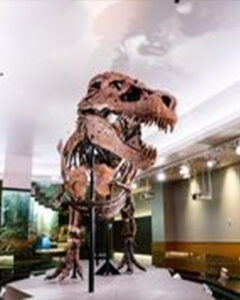
SUE, is a world-famous T. Rex known for being one of the largest, most complete, and best-preserved T-Rex’s on record. Chicago sent a full-sized cast of Sue to the Children’s Museum of Indianapolis for the Summer of 2021. The Research & Evaluation Department used this opportunity to learn more about the user experience to prepare for the launch of the updated Dinosphere exhibit in 2022.
Problem: Users need a learning environment that engages each person within their zone of proximal development.
Goal: The Museum wanted to learn more about how the interpreter’s patter, the teaching tools, and the environment impacted a user’s experience.
Role: User Researcher
Project Duration: 3 months
Define:
Our team helped the stakeholders to focus on what they were trying to learn from this project. Together we landed on the following questions:
- How long do guests spend listening to or engaging with staff?
- What percentage of guests engage actively, passively, or do not engage with staff?
- What topics do guests engage the most with?
- Where do guests direct their attention?
- What are guests taking away from the experience?
These goals were refined and then we considered how we could track each of them.
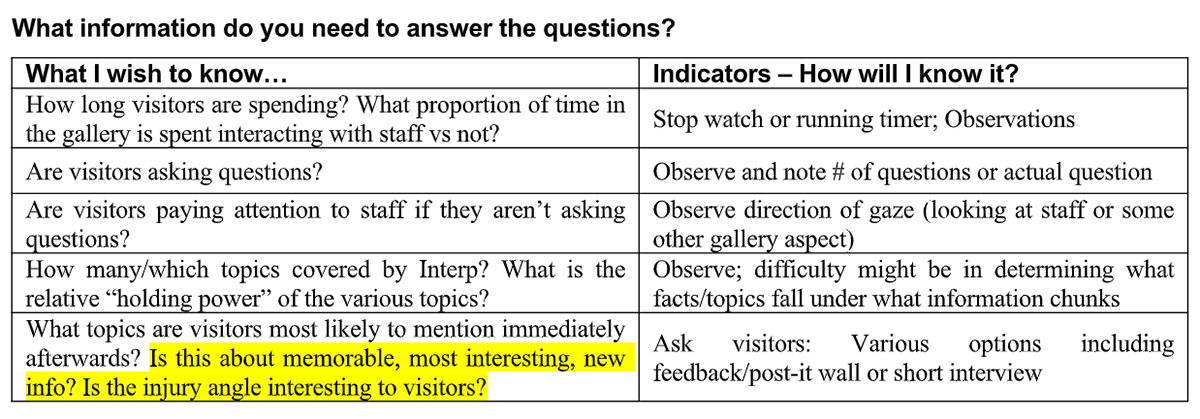
Collection Tool:
This information was then used to create a tool that could be used to track data during timed observations.
Observations:
I collected 55 of the 96 group observations during the data collection phase of this project. During collection, I noticed that guests were spending a lot of time listening and learning from the exhibit staff. Those who engaged seemed to spend the most time. These initial observations would prove true as the data was compiled.
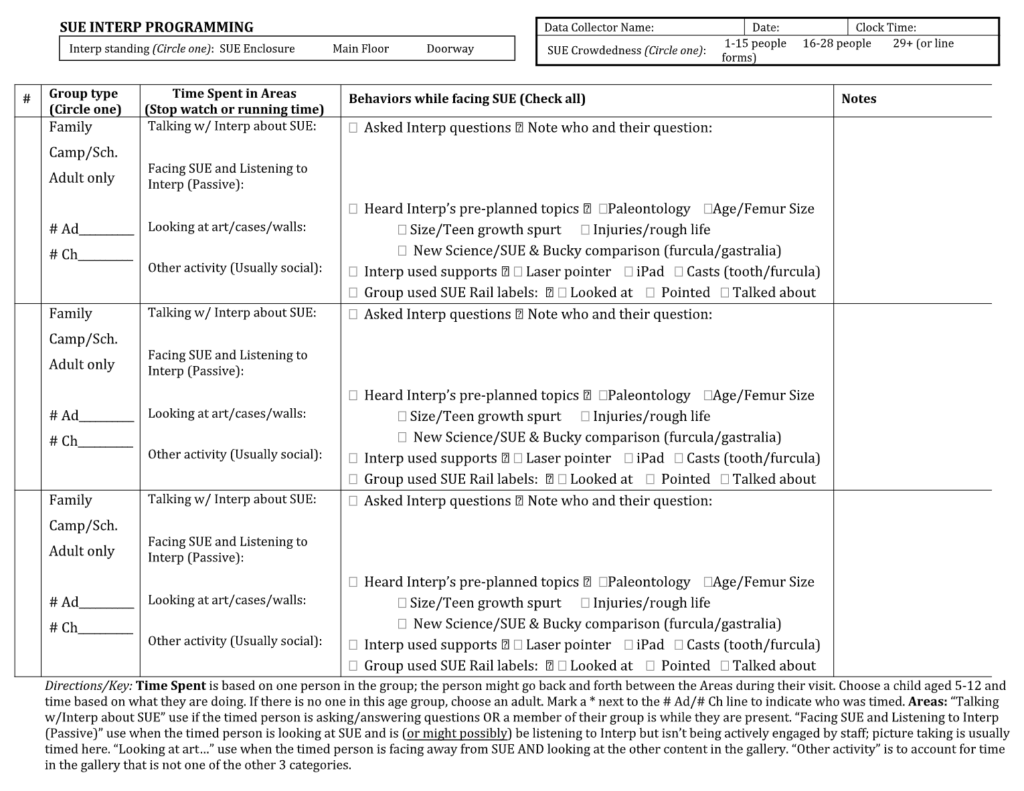
Time Spent?:
- The average guest stayed for 2m:50s.
- The average group talked with staff for 2m:36s.
- The average group passively listened to staff for 1m:35s.
- The average group spent 40 seconds looking at wall displays.
- The average group spent 54 seconds socializing.
- Groups who talked with staff stayed an average of 2 minutes longer.

Where did Guests Focus?:
It probably comes as no surprise that guests spent most of the time with their attention focused on the giant creature before them. They spent very little time looking at the information on the rails unless they were listening to a staff member at the same time.
We did notice that staff only directed attention to the cast of Sue 30% of the time. Stakeholders expected this number to be higher. This could be because guests were already looking, but it could also be an opportunity for growth. This would need to be explored further before acting on.
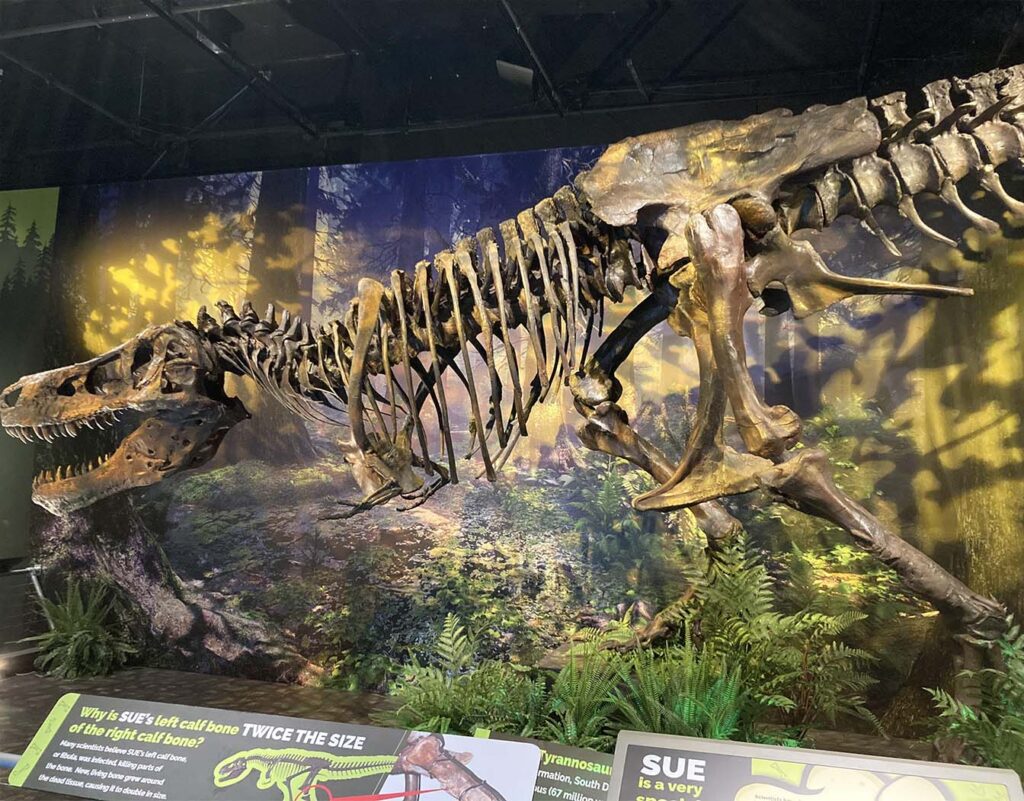
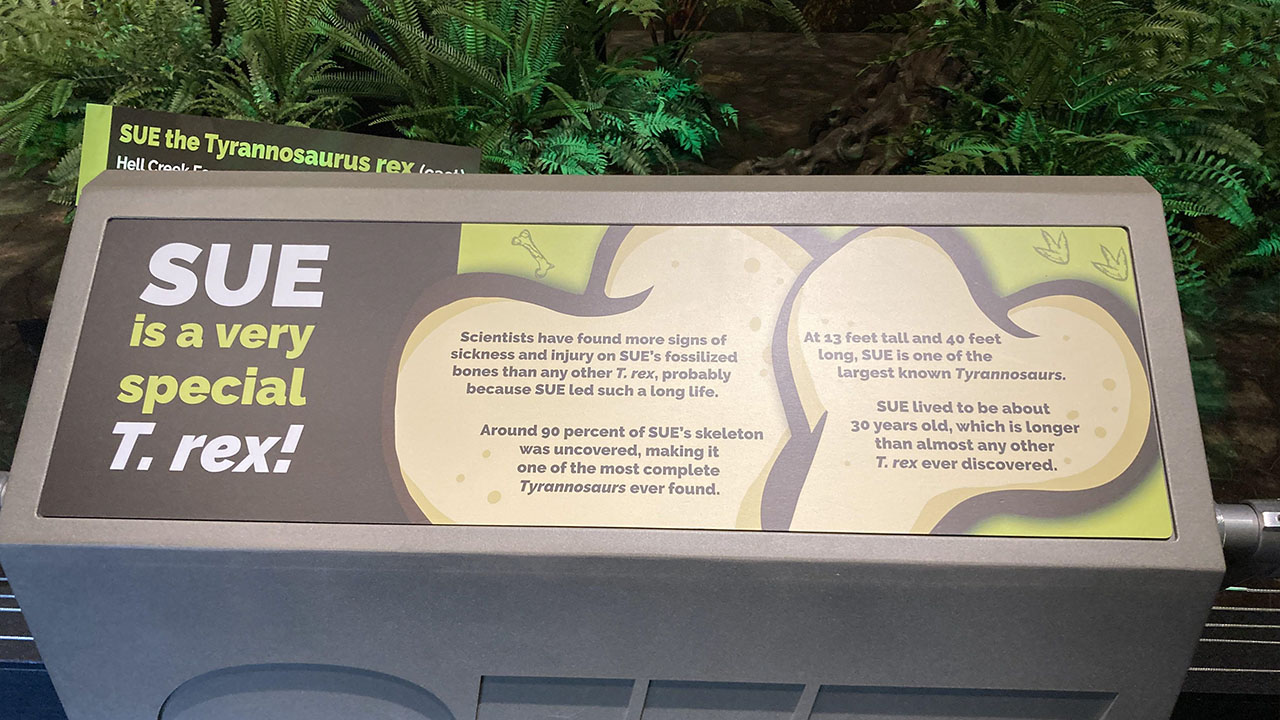


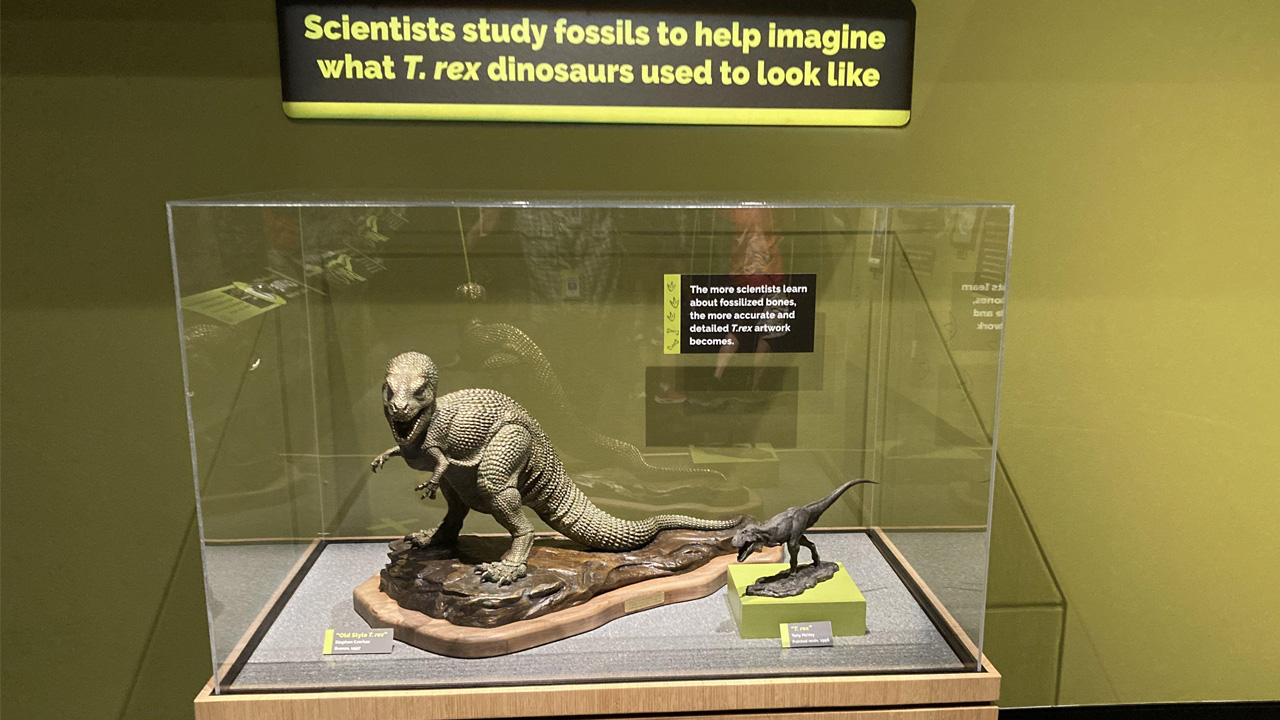
Engagement:
- 90% of guests engaged through listening or talking.
- 46% of guests engaged in conversation with staff.
- 1 out of every 3 groups asked at least one question.
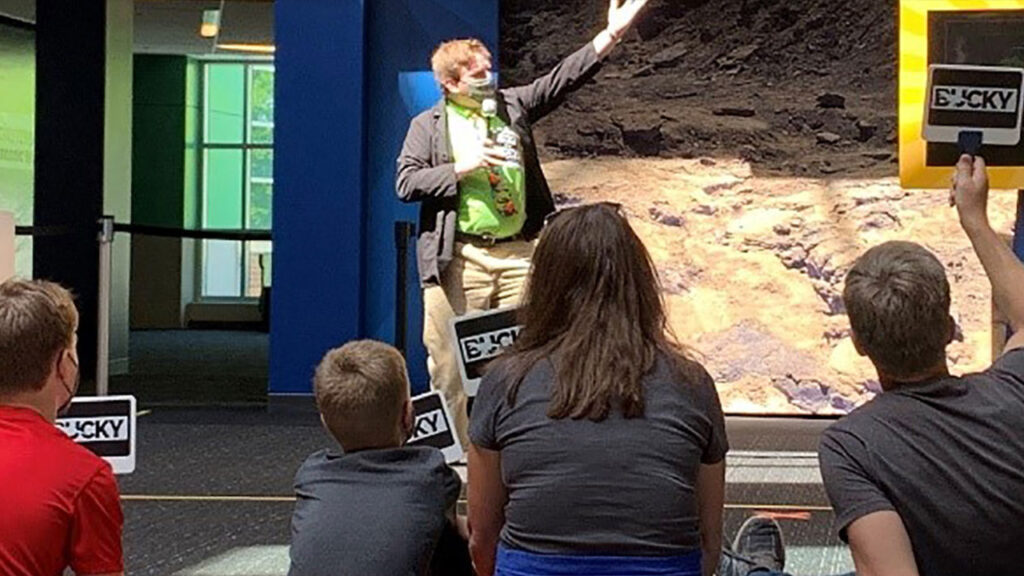
Interviews:
During Phase 2 of the study, we interviewed guests as they were leaving the exhibit. We asked them what they learned about T-Rex and compared the results with the topics prepared by the staff team. I collected 103 of the 216 responses to the question “What did you learn about T.Rex?”.
We found a clear connection between the topics that the staff prepared and the takeaway information that both adults and children walked away with.
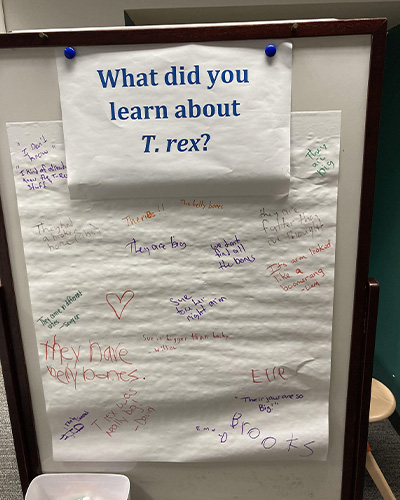
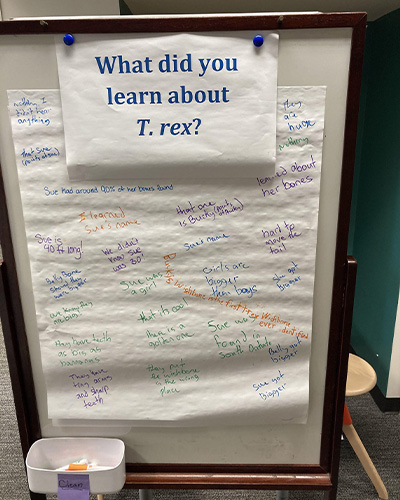
Synthesis:
We compiled and synthesized the data in order to create a presentation for stakeholders. The following two-page document was shared with leadership as well as the front-line staff that did the teaching.
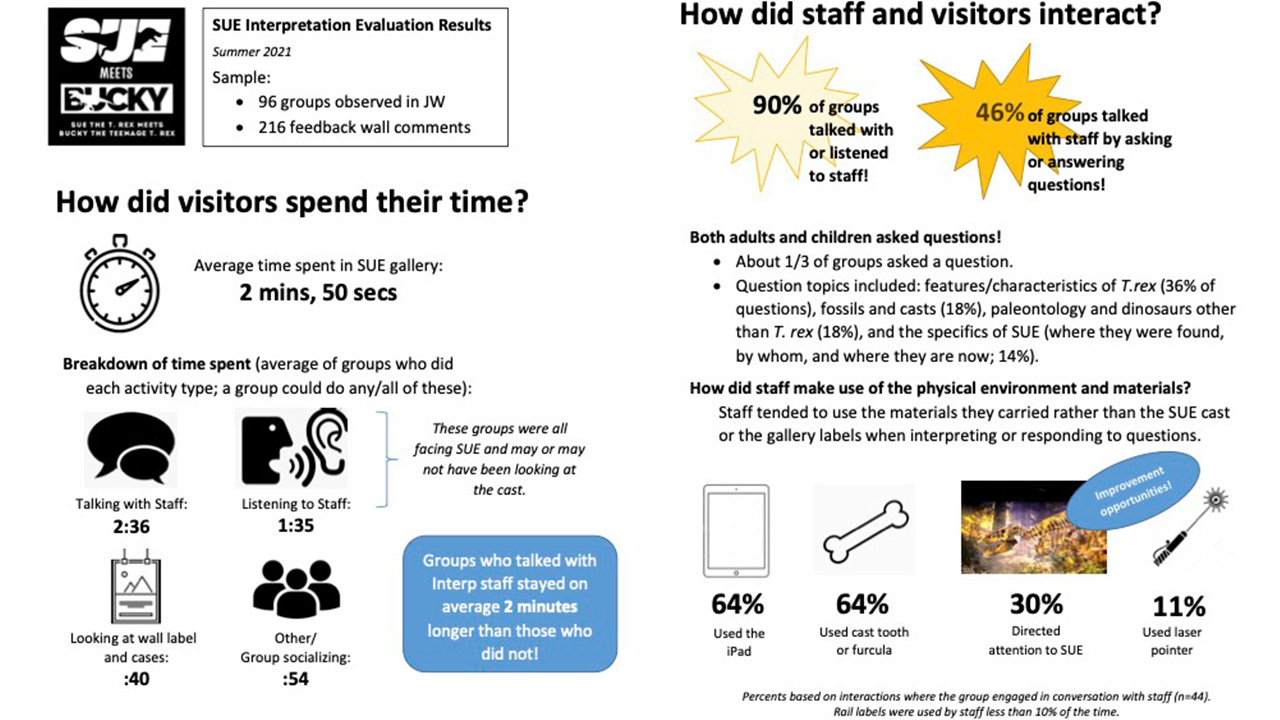
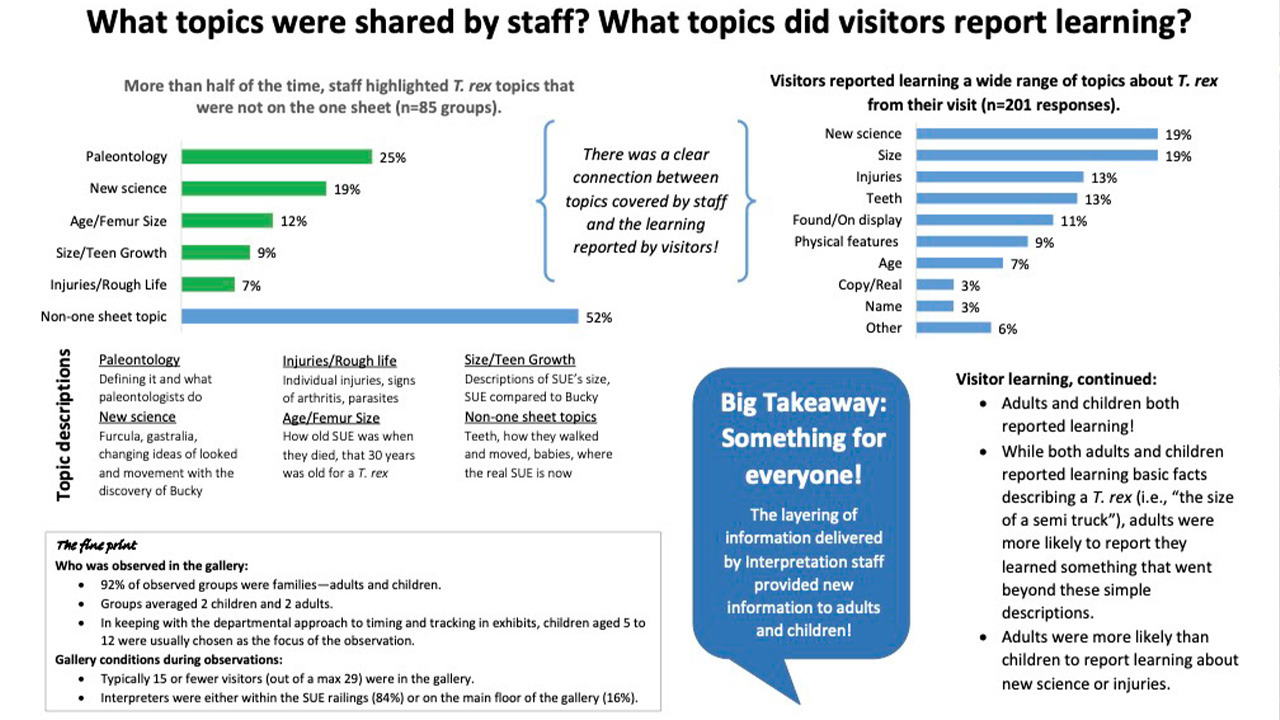
Learnings:
- I learned a lot about dinosaurs by spending so much time listening to Paleontologists. Did you know they have belly bones?
- The prepared topics and patter have a strong impact on what guests walk away knowing.
- Conversation with staff increases the time guests will spend in an exhibit.
- I wondered how much the layout of the room impacted the focus on the Sue cast.
